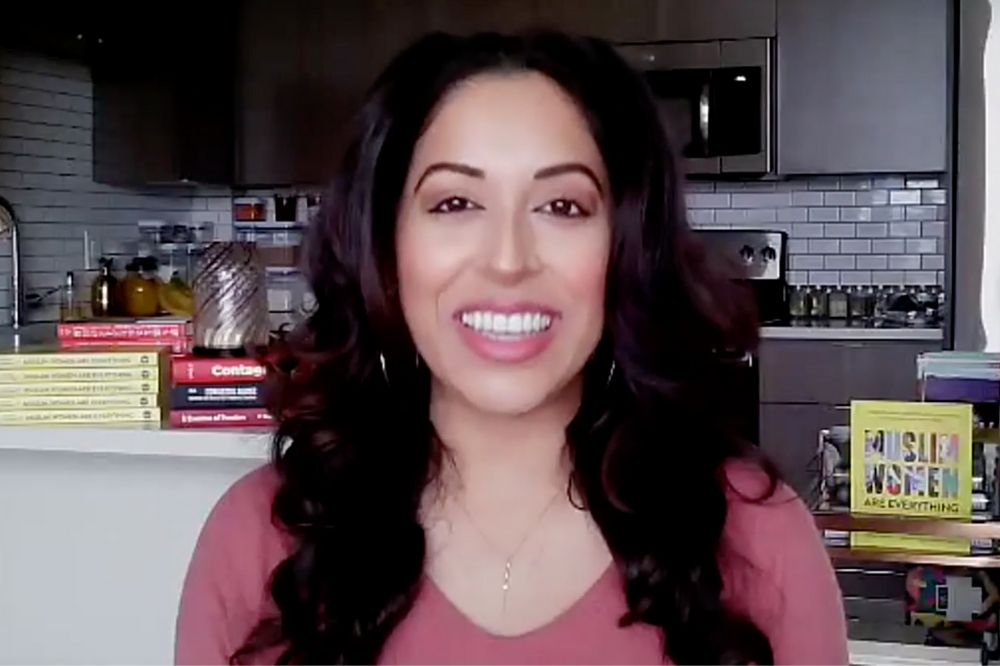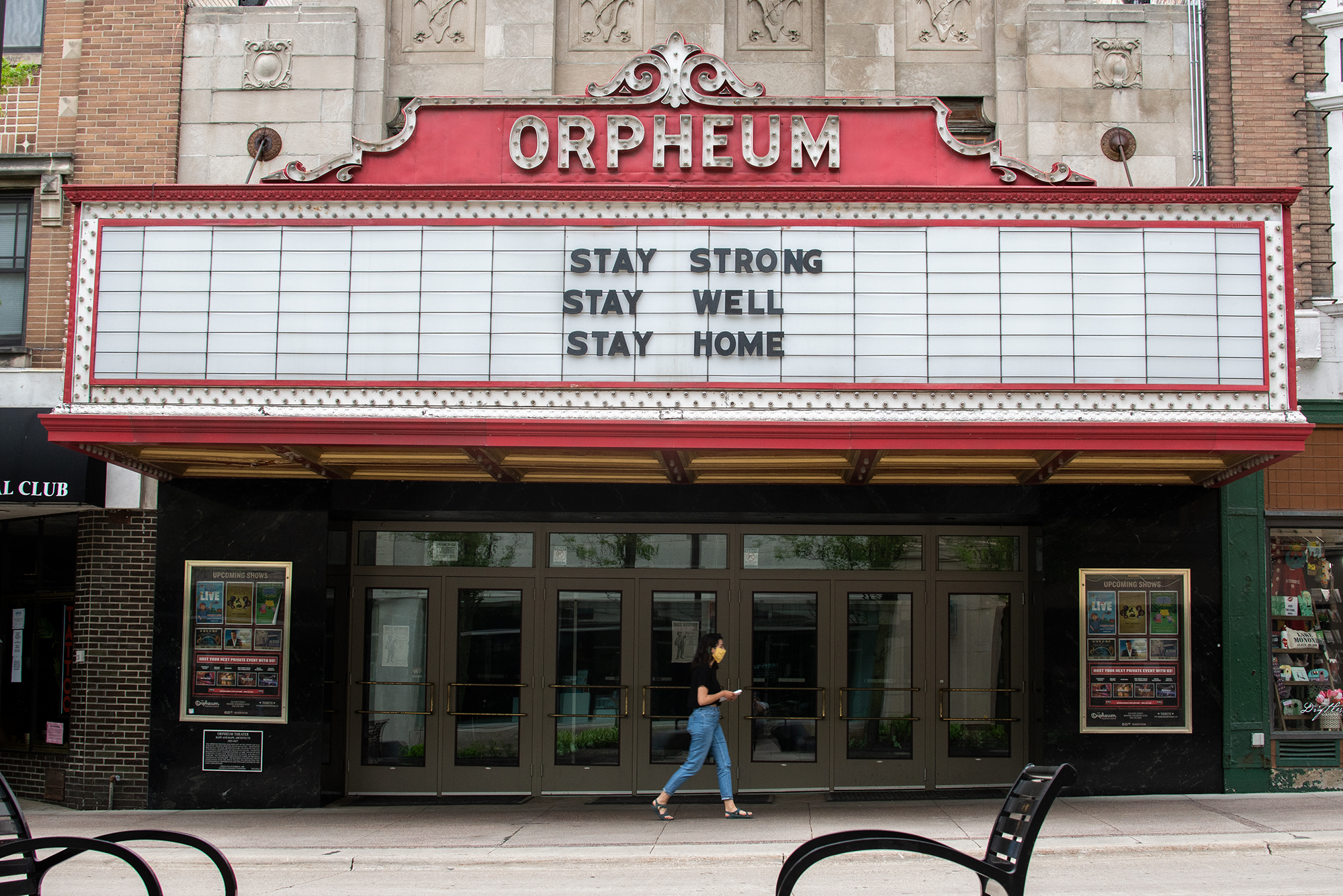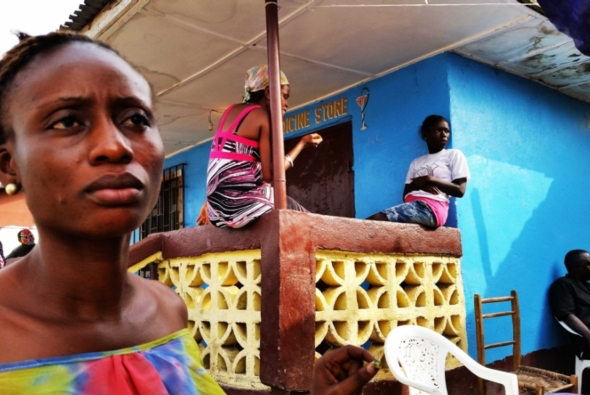
In light of the coronavirus pandemic and respective public health guidelines, the Pulitzer Center is shifting our events online. On April 9, 2020, Dr. Seema Yasmin participated in our first virtual Talks @ Pulitzer, thus beginning our Science and Health Series.
Dr. Yasmin, a multimedia journalist, medical doctor, poet, and current director of the Stanford Health Communication Initiative, shared her expertise on journalism and public health crises with audience members from Washington, D.C. to Madrid.
In her presentation, Dr. Yasmin explored three major themes: journalism as part of the public health sector ecosystem, challenges endured by journalists covering health crises, and the shortcomings of health reporting. Dr. Yasmin referenced her 2016 reporting, supported by the Pulitzer Center, in which she covered post-Ebola syndrome among survivors in West Africa. Her forthcoming book, If God is a Virus: The Ebola Poems (Haymarket, 2021), combines her reporting and poetry to tell the stories of those affected.
The following is an edited transcript of the Question & Answer session that followed Dr. Yasmin's presentation, moderated by Ann Peters, the Pulitzer Center's university and community outreach director. It also includes several audience questions that were not presented during the 45-minute webinar due to time constraints, but were answered by Dr. Yasmin after the session via email communication with the Pulitzer Center.
Those post-session answers are indicated by an asterisk *. Portions of this text have been revised for clarity and/or length.
Question: How do we get journalists to train for and focus on vulnerable populations? What type of training do you recommend?
Answer: Ideally, you will have newsrooms that have a science desk. Unfortunately, as we've seen so many cuts to journalism, we've seen science desks decimated to try and save money in the newsrooms. In fact, you can look at what's happening right now because newsrooms, like many other entities, are really hard hit by the pandemic and are laying journalists off right now when I feel like we need them the most. If you're interested in this and want to keep an eye on the state of journalism, you can check out the Poynter Institute. So that's my ideal situation: You have a newsroom that has a science desk and has people there who are well trained to cover these issues. If you don't have that luxury of a science desk, do that groundwork early on of finding a few key sources who are credible, who are reliable, and who lead you to other good sources.
Q: Do you have any particular resources that you'd recommend for evaluating studies?
A: One of the first things we do is call one of the lead authors on the study to answer some of our basic questions. I also like to ask the source who is critical of their work. A good source will tell you, 'I have this colleague who really criticizes my models.' Talk to that person. That's also another way of vetting your source. If you call a lead author and they're like, 'there are no limitations of my study and there are no flaws,' that's a really big red flag.
Q: How do you recommend reaching out to sources if you're not familiar with the community?
A: Seek out gatekeepers in the community. I'm thinking about imams or chaplins, community leaders or activists, who can be a good point of contact to then initiate interviews with other people in the community. That's a straightforward response because it's more difficult than that—and it should be more difficult than that. Imagine: We're talking about communities that often do not have a good history of interactions with the press, who have often been misrepresented many times in the press. So we have to do a lot of ground work to prove ourselves, to be respectful, and to acknowledge that history and that context.
Q: Is there a way for journalists to work with communities to tell their own stories?
A: Citizen journalism can be really effective, but I think we have to be careful how we do it in terms of training people well and working in partnership—not going in and dictating the stories we think should be told. Take the time and really listen to those folks. There are, I think, some organizations who are doing this really well, like the Block Club in Chicago. You can start looking up where good advocacy journalism is happening, where journalists are making very meaningful connections with underrepresented communities and listening to those people—passing them the microphone instead of speaking for them.
Q: What resources do you recommend for those with a medical background who are interested in journalism?
A: There are so many different ways of going into journalism. There's not one route—which can be both frustrating but also brilliant. Some of my favorite science journalists don't have science degrees (and in fact don't even have journalism degrees). I teach journalists and I'm always telling my students that—it's really important to be out there, to live your life, to build expertise in different things. If you already have that, I can definitely recommend the program I went through at the University of Toronto that takes people from different skill sets and backgrounds who already have expertise in a particular field and trains you how to report the news in that field. There are also internships in newsrooms—those are some of the best ways to cut your teeth, I think. And then you can write op-eds—we have the luxury nowadays in that everyone can be a publisher.
Q: How do you think the pandemic will change the field of journalism going forward?
A: I really worry about the future of journalism. I do try to be hopeful, I do try to seek those glimmers of optimism and hope where there feels like so much despair. And so in terms of journalism, we had a model and yes, it worked for some time, but it only worked for some people. The journalism that some are celebrating back in the 80s and the 90s was overwhelmingly white, was overwhelmingly male, was so Western-centered—we don't want to go back to that either. In terms of the pandemic, as many of us are sheltering in place and dealing with this new normal, I keep getting asked these questions as an epidemiologist: 'When can I go back to work? When can things go back to normal?' I think that if normal is a set of conditions and systems and circumstances that got us into this horrific mess, I don't want to go back to that normal. I want to create a better society, and that better society needs to have a better version of journalism too—a more sustainable one, a more accessible one, one where there aren't news deserts, one where there are newsrooms that are diverse and where the journalists are well-supported to do their jobs. So yes, there is lots of anxiety, grief, and despair, but we need to think very optimistically about the future. How can we rebuild in a way that's better and more sustainable?
Q: How can journalists be mindful of the constantly changing state of research in general, but especially during a pandemic, so that they are not accidentally misleading people?*
A: Offer vital context to your audience so instead of just reporting case counts (which may be dramatically rising or falling). Explain how the numbers are affected by things like increased testing, changing case definitions, shifting criteria for how cases are included (for example, recently NY was not including those who died from Covid-19 at home in official fatality reports). How do these factors change the way we report data to our audiences? Include those details to help audiences better understand how the data is being collected, who is being included and what this means for them. Context is crucial in helping us grasp what the numbers are really about. It's our job to introduce audiences to the stories of the marginalized and most vulnerable whose voices are often excluded or misrepresented in the press. Also, be very clear early on that epidemics are breaking news situations that are dynamic and quickly evolving in nature.
Q: Can you address the unique concerns of freelance print journalists without newsrooms who want to get immersed and cover these issues?*
A: I'm particularly concerned for the safety of freelance journalists who often lack institutional safeguards and may work under precarious conditions for little pay and without vital benefits such as health insurance. Freelance journalists such as Amy Maxmen—whose reporting on Ebola was supported by the Pulitzer Center—often bring us stories that staff writers at major news outlets are not able to write. I'm thinking particularly about Amy's reporting on Ebola from West Africa where as a freelancer she was able to pitch unique stories that were being missed by staff writers embedded in newsrooms. We have to implement safeguards for freelancers and that includes proper training.
-------
Next in the Pulitzer Center's Science and Health Series is Jon Cohen, Senior Correspondent at Science, who will focus on the race for a COVID-19 vaccine.
Cohen's reporting is featured in "The Science of COVID-19" Pulitzer Center-supported project that explores the nature of the coronavirus, the course of the disease, potential treatments and vaccines, the patterns of spread around the world, and its impacts on society.
For more information on this upcoming virtual Talks @ Pulitzer session on Thursday, April 16, 2020, please visit the Pulitzer Center event page.

Project
Speaking Out on Coronavirus
How are the Pulitzer Center team and its Campus Consortium community responding to the COVID-19...









